Invited Speakers List
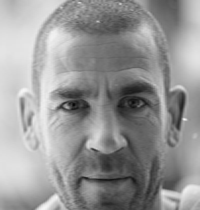
Alexander Altland
Institute for Theoretical Physics
University of Cologne
Germany
www.thp.uni-koeln.de/
Alexander Altland is a full professor of theoretical physics at the university of Cologne, Germany since 2001. He performed his studies in Marburg and Heidelberg and after several PostDocs at the Weizmann Institute of Science in Revohot, Israel, he derived his Habilitation (second degree) at Cologne University. His major research fields are field theories of disordered systems, quantum nonlinear dynamics and topological matter.
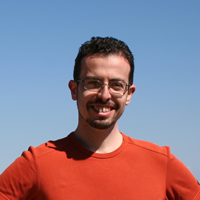
Jacopo Bertolotti
Physics and Astronomy
University of Exeter
emps.exeter.ac.uk/physics-astronomy/staff/jb601
Jacopo Bertolotti received his PhD degree in Physics from the University of Florence (IT) in February 2008. He worked as a postdoc at the European Laboratory for Non-Linear Spectroscopy (LENS), where he studied anomalous transport of light and developed the "Lévy glass", a inhomogeneously scattering material when light is superdiffusive. In April 2010 he moved to the University of Twente (NL) to work in the Complex Photonics Group. There he started working on wavefront shaping and imaging, and developed e technique to retrieve non-invasively the shape of a fluorescent object hidden behind a strongly scattering layer. In March 2013 he moved to the Institute Langevin (Paris) until September 2013, when he was appointed Lecturer in Physics at the University of Exeter (UK).
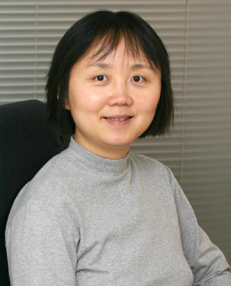
Hui Cao
Applied Physics
Yale University
USA
www.eng.yale.edu/caolab/
Hui Cao is Professor for Applied Physics and of Physics at the Yale University. Her broad research interests in nano photonics range from waves in random media, photonic crystals and quasi crystals up to polaritonics and diversly shaped micro-cavity lasers. She invented the random laser but further she holds also many patents, one of them is an exciton polariton emitting diode together with her post-doctoral advisor Yoshihisa Yamamoto in Stanford. Professor Cao has been recently awarded to be John Simon Guggenheim Fellow as well as APS DLS Distinguished Traveling Lecturer. She is Fellow of American Physical Society and Fellow of Optical Society of America since 2007 and she was honored with the Maria Goeppert-Mayer Award from American Physical Society in 2006 as well as many others before.
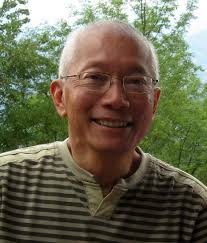
Le Si Dang
Institut Néel CNRS
Grenoble
France
neel.cnrs.fr/spip.php?article1496&lang=fr
Le Si Dang is researcher with the Institut Néel, CNRS in Grenoble and one of the poineers of polaritonics. He won the Genter-Kastler medal in 2010 for his research contributions in polaritonics within low dimensional semi-conductors and Bose-Einstein condensation therein. The Gentner-Kastler medal is jointly awarded by the french physical society and the german physical society.
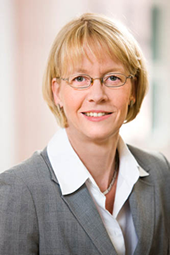
Cornelia Denz
AG Nichtlineare Photonik
Istitut für Angewandte Physik
Universität Münster
Münster, Germany
uni-muenster.de/Physik.AP/Denz/
Cornelia Denz is head of the Institute of Applied Physics of University of Münster since 2003, and leader of the Nonlinear Photonics team. She obtained her Diploma and PhD in physics from Darmstadt University of Technology in 1988 and 1992, respectively. In 1990/91 she was a junior researcher at the Institut d'Optique in Orsay, France. She received the Lise-Meitner Award in 1992, and the Adolf-Messer- Award in 1999. Since 2001, she is a professor for physics, focussing on nonlinear photonics. Since 2010, Cornelia Denz is also a vice-rector for international affairs and young researchers at University of Münster. In 2012, she was awarded “teacher of the year” in natural sciences in Germany. She is also fostering pupil's interest in physics, being the founder of MExLab - a hands- and minds-on lab at University of Münster. Cornelia Denz has pioneered linear and nonlinear optical structuring of light for applications in information processing, energy, biophotonics, and optofluidics. Fields with important achievements include holographic data storage, optical and dielectrophoretic tweezers, 2d and 3d nonlinear refractive index lattices, nonequilibrium transport of light in nonlinear media including optical solitons, quantum tunneling and oscillations, Anderson localization, coherent scattering, and frequency conversion. She has published more than 190 publications, numerous book chapters, and three books. She is a fellow of the Optical Society of America and the European Optical Society, and member of the Academy of Sciences of the state of Northrhine-Westfalia.
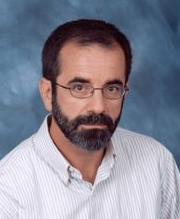
Aristide Dogariu
CREOL
The College of Optics & Photonics
University of Central Florida
Orlando
USA
random.creol.ucf.edu/
Aristide Dogariu received his PhD from Hokkaido University and he is the Florida Photonics Center of Excellence Professor of Optics. His research interests include optical physics, waves propagation and scattering, electromagnetism, and random media characterization. Recently he focuses on the optical Spin Hall effect as well as optical forces in comlex media. Professor Dogariu is a Fellow of the Optical Society of America, the Physical Society of America, and currently serves as the division editor of Applied Optics - Optical Technology.
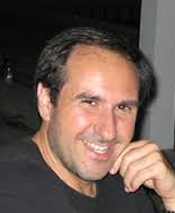
Thierry Giamarchi
DPMC
University of Geneva
24, Quai Ernest Ansermet, 1211 Geneva
Switzerland
dpmc.unige.ch/gr_giamarchi/
Thierry Giamarchi graduated from Ecole Normale Superieure in Paris and received his PhD from Paris XI University in 1987. He has been a permanent member of the french CNRS since 1986, and between 1990-1992 was a postdoc/visitor at Bell Laboratories. In 2002 he moved as a full professor to the Condensed Matter Department at the University of Geneva. Since 2013 he is a member of the French Academy of Sciences, and a fellow of the American Physical Society.
His research work deals with the effects of interactions in low dimensional quantum systems, such as Luttinger liquids, and on the effects of disorder in classical and quantum systems with works showing the existence of novel disordered phases such as the Bose glass and the Bragg glass. He received in 2000 the Abragam prize from the french Academy of Sciences.
He is the author of about 220 publications, 10 chapters of books, and one monograph ``Quantum physics in one dimension'' with Oxford.
He is a referee for many journals and funding organizations, has been an editor and a "Distinguished Referee" of Europhysics letters and has been recognized as an ``Outstanding Referee'' by the APS.
He has also served on the board of several scientific institutions such as the CNRS theory comity and the ``Les Houches school'' administrative board.
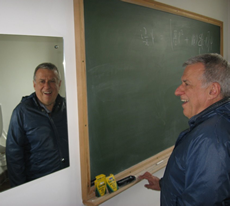
Shmuel Fishman
Physics Department
Israel Institute of Technology, Technion
Haifa, Israel
physics.technion.ac.il/~fishman/
Shmuel Fishman is Professor of Physics at the Technion, Israel Institute of Technology, in Haifa, Israel. Working many years in the fields of statistical physics condensed matter physics and nonlinear dynamics. For a long time he works in the field of quantum chaos and established the relation between the kicked-rotor and Anderson localization (with Prange and Grempel). He studied also variants of the kicked rotor, in particular when the effect of gravity is important in particular near resonances. He is interested also in the dynamics in incommensurate, pseudo-random as well as in random potentials (in space or both in space and time). Of particular interest is the nonlinear Schroedinger equation with a random potential. He is also interested in phase transitions and the renormalization group. In recent years he explored phase transitions in ion chains.
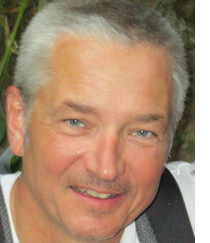
Sergej Flach
Center for Theoretical Physics of Complex Systems
Institute for Basic Science
Daejeon, Korea
www.ibs.re.kr/eng.do
Professor Dr. Sergej Flach performed his habilitation in 1998 in Theoretical Physics, Technische Universität Dresden, Germany, supported by a Habilitationsstipendium (1997) and a Postdoktorandenstipendium (1992) by Deutsche Forschungsgemeinschaft. He was awarded the Stefanos Pnevmatikos Award for Nonlinear Science (2002), for contributions in the theory
of discrete breathers with applications to localized modes in atomic and molecular
crystals and to coupled arrays of Josephson junctions. His research was supported with the Sonderstipendium (1991) by the Alexander von Humboldt Stiftung. Further he was awarded the Prize of Joint Institute for Nuclear Research Dubna (1989, Russia) for the work on
anharmonic models of high-temperature superconductors, together with V.L.
Aksenov, N.N. Bogoliubov, S.L. Drechsler and N.M. Plakida. Professor Flachs research expertise is highly acknowledged and respected in
nonlinear quantum and classical waves in complex systems; Nonlinear waves in disordered media – classical and quantum; Fano resonances in nanocale structures; Transport properties of strongly driven classical and quantum systems far from equilibrium; Cryptography with nonlinear waves at criticality; Lattice dynamics at structural phase transitions; Dynamics of supercooled liquids; Flat Bands; Numerical methods for the analysis of dynamical correlated systems; Mode localization in classical and quantum finite systems; Applications to dynamics of Josephson junction networks; Applications to light propagation in structured media; Applications to dynamics of ultracold atomic gases in optical potentials; Applications to dynamics of exciton-polariton condensate networks.
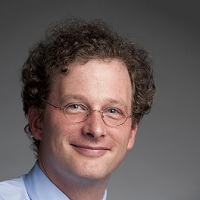
Georg von Freymann
AG Optische Technologien und Photonik
Frachbereich Physik
Kaiserslautern, Germany
www.physik.uni-kl.de/freymann
Georg von Freymann received his Ph.D. degree from the Physics Department, Universität Karlsruhe (TH), Karlsruhe, Germany, in 2001. He was a Postdoctoral Researcher at Institute of Nanotechnology, Forschungszentrum Karlsruhe, Karlsruhe, Germany in 2002 and at the University of Toronto, Toronto, Canada, till 2004. From 2005 to 2010 he was head of a Junior Research Group in the Emmy Noether-programme of the Deutsche Forschungsgemeinschaft (DFG) at the Institute of Nanotechnology, Karlsruhe Institute of Technology, Germany. There, he co-founded the 3D µ-printing company Nanoscribe in 2007, acting as CTO (till 2014). Since 2010 he is full professor for experimental/technical physics at University of Kaiserslautern, Germany and since 2013 additionally head of department materials characterization and testing of the Fraunhofer institute for physical measurement techniques in Kaiserslautern. His research interests include three-dimensional nano-fabrication technologies, nano-photonic materials (especially photonic crystals, photonic quasicrystals, aperiodic structures) and THz optoelectronics.
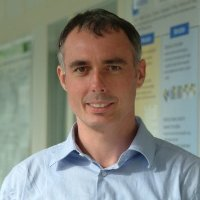
Sven Höfling
School of Physics & Astronomy
St Andrews
United Kingdom
condensed matter physics
Sven Höfling was born in 1976. He received the diploma degree in Applied Physics from the University of Applied Science in Coburg and his Ph.D. degree from Würzburg University.
He was with the Fraunhofer Institute of Applied Solid-State Physics, Freiburg, Germany from 2001 to 2002 working on the characterization of blue and white InGaN light emitting diodes. In 2003, he joint Würzburg University for his Ph.D. work on single mode emitting GaAs/AlGaAs quantum cascade lasers. From 2006 to 2013, he was head of the Optoelectronic Materials and Devices Group at Technische Physik, Würzburg University. Since 2013 he holds a personal chair at the University of St Andrews, Scotland and he is professor of physics. His research interests include the design, fabrication, and characterization of low-dimensional electronic and photonic nanostructures, including quantum wells and quantum dots, organic semiconductors, high-quality factor microcavities, photonic crystal devices and semiconductor lasers. By tailoring light-matter interaction in semiconductor microcavities, his work contributed to various world first result sin the field of microcavity exciton-polaritons, like the direct observation of Bogoliubov excitations of a single single vortex-antivortex pair in a polariton condensate, high orbital condensation like d-wave condensation and observation of Dirac bosons in two-dimensional polaritonic lattices, the demonstration of the spinor-behavior of exciton-polariton condensates, and the demonstration of and electrically driven exciton-polariton laser.
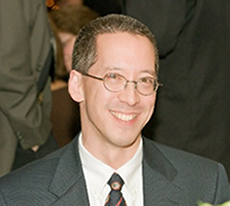
Daniel T. Kulp
Editorial Director
American Physical Society
www.aps.org/
Daniel Kulp is the Editorial Director for all the journals of the American Physical Society (APS). He has been with APS, working in the Editorial Office, for over 18 years and has recently been elected a Fellow of the Society. During this time he has been involved in all aspects of publishing including peer-review, production, distribution, and personnel and financial management of journals. He is also part of the APS Strategic Management team which helps guide the Society. With 50 full-time professional editors and 60 part-time remote Associate and Senior Editors reporting to him, Dan has become adept at "herding cats" and reaching consensus across the journals. He has also developed into the in-house expert on copyright and licensing issues, and has been at the forefront of APS's efforts in open access publishing.
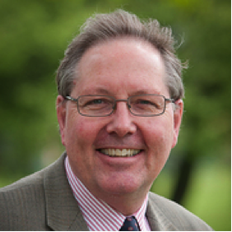
Peter B. Littlewood
James Franck Institute
University of Chicago
Argonne National Laboratory
Chicago, USA
www.anl.gov/contributors/peter-b-littlewood
Peter B. Littlewood is the Director of Argonne National Laboratory, one of the nation’s largest science and engineering research centers, and a Professor of Physics in the James Franck Institute at the University of Chicago. Dr. Littlewood came to Argonne in 2011 after being appointed Associate Laboratory Director of Argonne's Physical Sciences and Engineering directorate, which focuses on discovery science across a broad range of disciplines, and on creating and understanding new materials and chemistries that address the grand challenges in energy and the environment. Before that, he spent 14 years at the University of Cambridge in the United Kingdom, where he last served as the head of the Cavendish Laboratory and the Department of Physics. Dr. Littlewood started his career at Bell Laboratories, beginning in 1980 as a postdoctoral member of the technical staff; by 1992, he had worked his way up to head of Theoretical Physics Research. Dr. Littlewood is an internationally respected scientist who holds six patents, has published more than 200 articles in scientific journals and has given more than 200 invited talks at international conferences, universities and laboratories. He is a fellow of the Royal Society of London, the Institute of Physics and the American Physical Society, and is an associate member of The World Academy of Sciences. Dr. Littlewood holds a bachelor's degree in Natural Sciences (Physics) and a Ph.D. in Physics, both from the University of Cambridge. The University of Chicago has led Argonne’s operations since before the laboratory was formally chartered in 1946.
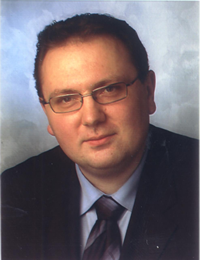
Andreas Lubatsch
Electrical Engineering, Precision Engineering, Information Technology
Georg-Simon-Ohm University of Applied Sciences
Nürnberg, Germany
th-nuernberg.eu/
Andreas Lubatsch started his career with the PhD at Karlsruhe Institute of Technology (KIT) and the university of Bonn in Germany and he performed a PostDoc at the LPMMC in Grenoble, France. Andreas Lubatsch is working on self-consistent transport of light in disordered random media, Anderson localization and random lasing. Further he works on strongly correlated electronics and made substantial contributions with the first solver in non-equilibrium Floquet-Keldysh dynamical mean-field theory (DMFT), iterative perturbation theory (IPT) . He is currently Lecturer at the Department of Electrical Engineering, Precision Engineering, Information Technology at the Georg-Simon-Ohm University of Applied Sciences, Nürnberg, Germany.
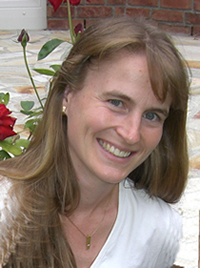
Kathy Lüdge
Institut für Theoretische Physik
Freie Universität Berlin
Germany
www.physik.fu-berlin.de/einrichtungen/ag/ag-luedge/index.html
Kathy Lüdge was born in Berlin, Germany, in 1976. Since October 2014 she is a visiting professor at the Freie Universität in Berlin and since November 2011 she is Privatdozentin with the Institute of Theoretical Physics, Technische Universität (TU) Berlin, Berlin. She received the Diploma and Dr.rer.nat degrees in physics from the Department of Solid-State Physics, TU Berlin, in 2000 and 2003, respectively. From 2001 to 2002, she was a Visiting Scholar with the Department of Material Science, University of Minnesota, Minneapolis, MN, USA. She received the Habilitation (venia legendi) degree from TU Berlin in 2011. Her research interests include the modeling of semiconductor quantum-dot lasers, nonlinear laser dynamics, and control with optical feedback. She is the Editor of the book Nonlinear Laser Dynamics - From Quantum Dots to Cryptography (Wiley, 2011) as the 5th volume of Reviews of Nonlinear Dynamics and Complexity.
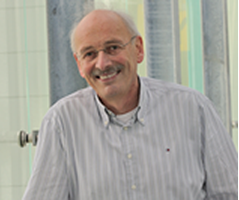
Georg Maret
Soft Matter
Universität Konstanz, Germany
cms.uni-konstanz.de/physik/maret/
Georg Maret is a professor of physics at the University of Konstanz, Germany. He studied physics at University of Bonn and Technical University Munich. In 1976 he got a PhD in physics for work on magnetic properties of biomolecules such as DNA at the Grenoble High Field Magnet Laboratory. In the 80ies he investigated the response of various biosystems to strong magnetic fields and studied coherence effects in strong light scattering (coherent backscattering, Anderson localization and Diffusing wave spectroscopy), with recent focus on detection and imaging of neural activity in homing pigeons. He also used colloidal particles confined to a liquid-air interface as a model to study melting, glass transition and crystallization in 2D and to quantitatively test theoretical predictions such as the KTHNY melting scenario. From 1993 to 1997 he was director of the Institut Charles Sadron, Strasbourg and later Dean of the Faculty of Sciences at the University of Konstanz. He won several prizes among which the Gentner-Kastler Prize of the German and French Physical Societies in 2011.
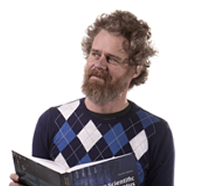
Giovanni Modugno
University of Florence - Physics Department
European Laboratory for Non-linear Spectroscopy (LENS), Italy
lens.unifi.it
Giovanni Modugno graduated from the University of Florence and received his PhD from Scuola Normale Superiore in Pisa in 1998. Since 2005 he is associate professor in Physics at University of Florence and associate researcher at LENS. His expertise is in experimental physics with ultracold quantum gases. Currently, his interests are focused on the quantum simulation of disordered systems, from Anderson localization to the superfluid-insulator transition in low dimensionality and the Bose glass.
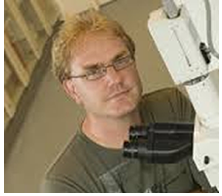
Allard P. Mosk
Complex Photonic Systems (COPS)
University of Twente
Twente, The Netherlands
cops.nano-cops.com/
Allard Mosk received his Ph.D. in 1999 in the field of ultracold quantum gases. Major results in this field were the first observation of photoassociation of hydrogen and of the Feshbach resonance in lithium, and the original proposal for observation of negative-temperature states in atomic gases. In 2003 he entered the field of optics in complex media, where he developed methods to control diffusive light. In 2007 his team demonstrated the first focusing of light through strongly scattering media. The wavefornt shaping method at the basis of this work has been used in many new imaging and focusing modalities worldwide. In 2011, Mosk’s team used this method to produce the smallest focus of visible light, in a high-index scattering medium. In 2012 the team demonstrated fluorescence imaging through scattering media using speckle correlations, a method quickly picked up by other groups and generalized to very high resolution by the same team. Wavefront shaping also lies at the basis of quantum secure authentication, a new security method recently developed by Mosk and colleagues.
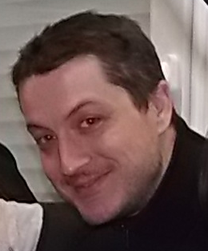
Maxime Richard
Institut Néel-CNRS/UJF
25, avenue des Martyrs - BP 166
Fr-38042 Grenoble Cedex
neel.cnrs.fr/spip.php?article1458&lang=fr
Maxime Richard defended his PhD in december 2004 in Université Grenoble Alpes, on the subject of microcavity-polariton bosonic stimulation. He then moved to EPFL in the group of Benoit Deveaud (EPFL, Lausanne, Switzerland) where he and his coworkers have demonstrated the first Bose-Einstein condensation of polaritons. He was then hired as a permanent research staff in Institut Néel (CNRS, France) in 2008. After some work on low-dimensional polariton condensate in large bandgap microstructures, his current research topic is focused on heat transport properties of out-of-equilibrium polariton quantum fluids.
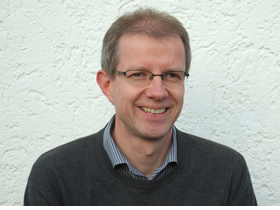
Klaus Richter
Institut für Theoretische Physik
Universität Regensburg
www.physik.uni-regensburg.de/forschung/richter/
Klaus Richter is a Professor for Theoretical Physics at the University
of Regensburg, Germany. His research interests range from mesoscopic physics,
topological insulators and spintronics to transport of cold atoms, photonic systems
and quantum chaos. Besides various aspects of quantum transport theory his
expertise comprises in particular semiclassical path integral methods which
has been most recently developed and applied in his group to tackle non-equilibrium
quantum many-body dynamics.
Klaus Richter had obtained his PhD at the University of Freiburg, Germany, in 1991.
After postdoctoral stays at the University Paris-Sud in Orsay (France)
and University of Augsburg (Germany) he spent 5 years as the head of a research group
at the Max Planck Institute for the Physics of Complex Systems in Dresden, Germany.
In 2001 he took up a Chair in Condensed Matter Theory in Regensburg.
He was spokesperson of the Division "Dynamics and Statistical Physics"
and is presently (until spring 2015) spokesperson of the Condensed Matter Section
of the German Physical Society.
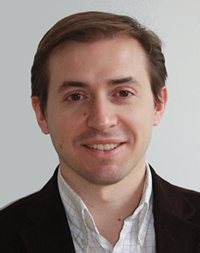
Laurent Sanchez-Palencia
University Paris-Saclay
Laboratoire Charles Fabry
Palaiseau (Paris)
France
www.uquantmat.fr/
Laurent Sanchez-Palencia graduated from Ecole Polytechnique in 1999 and received his PhD degree from Ecole Normale Supérieure de Paris in 2003. He was a Post-Doc fellow at the University of Hannover (Germany) from 2003 to 2004. He is now a CNRS researcher and a Professor CC at Ecole Polytechnique. He is the leader of the Quantum Matter Theory group at Laboratoire Charles Fabry (University Paris-Saclay). His research is devoted the the development of analytical and numerical approaches to quantum disordered disordered and strongly-correlated quantum systems, particularly in the field of ultracold atoms and quantum simulators. He was awarded the 2012 Leconte prize from the French Academy of Sciences and a 2010 Starting Grant from the European Research Council.

Patrick Sebbah
Institut Langevin
ESPCI ParisTech
CNRS UMR 7587, Paris, France
www.institut-langevin.espci.fr/patrick_sebbah
Patrick Sebbah is a Director of Research at CNRS, Institut Langevin (Paris, France), and is presently at Bar Ilan University (Ramat Gan, Israel) as an associate professor. He graduated from Telecom ParisTech and Orsay University, France. He received is PhD from the University of Nice Sophia-Antipolis. He performed a post-doc at Queens College, CUNY, New York and started is CNRS career at Laboratoire de Physique de la Matière Condensée in Nice, France. His research is devoted to wave propagation in random media and wave-matter interaction. He has been interested in multiple scattering, wave localization, gain in random media, nonlinear scattering, metamaterials … His group has been strongly involved in the concept of random lasing, and the investigation of the nature of the lasing modes. He recently proposed and demonstrated an original method for the control of random laser emission. He is also investigating new functionalities for flexural waves in thin plates, with recently the first demonstration of time-resolved super-focusing of elastic waves by a flat lens. He has been strongly involved in the experimental observation of localized states for classical waves and their manipulation. The group is exploring the inverse problem and the design of structured materials with predetermined localization properties.
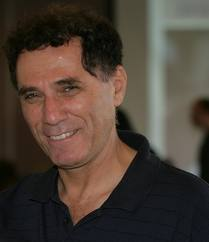
Mordechai (Moti) Segev
Physics Department
Israel Institute of Technology, Technion
Haifa, Israel
physics.technion.ac.il/~msegev/
Mordechai (Moti) Segev is a Distinguished University Professor and the Trudy and Norman Louis Professor of Physics, at the Technion - Israel Institute of Technology, Haifa, Israel. He received his B.Sc. and D.Sc. from the Technion, Israel, in 1985 and 1990, respectively. Moti Segev has spent one year at Caltech as a post-doctoral fellow and two more years as a Senior Research Fellow. He joined Princeton in September of 1994 as an Assistant Professor, becoming an Associate Professor in 1997, and a Professor in 1999. In the summer of 1998, Moti Segev went back to his home country, Israel, and joined the Technion, eventually resigning from Princeton in 2000. Moti Segev's research interests are mainly in Nonlinear Optics, Solitons, Sub-wavelength Imaging, Lasers and Quantum Electronics, although he finds much entertainment in more demanding fields such as basketball and hiking. Moti Segev is a Fellow of the Optical Society of America – OSA (1997), a Fellow of the American Physical Society - APS (2000). He has won several major international and national awards, among them the 2007 Quantum Electronics Prize of the European Physics Society, the 2009 Max Born Award of the OSA, and the 2014 Arthur Schawlow Award of the APS. On the national level, he won the 1995 Sloan Research Award in Physics (USA) and the 2008 Landau Prize (Israel). In 2011 he was elected to the Israel Academy of Sciences and Humanities, and in 2014 he won the Israel Prize in Physics (highest honor in Israel). However, above all his personal achievements, he takes pride in the success of his graduate students and postdocs, among them are currently 17 professors in the US, Germany, Taiwan, Croatia, Italy, India and Israel, and many holding senior R&D positions in the industry.
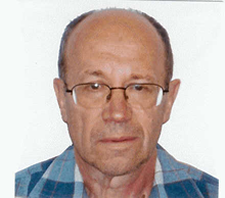
Boris Shapiro
Physics Department
Israel Institute of Technology, Technion
Haifa, Israel
phys.technion.ac.il/en/people/all?view=person&id=39
Boris Shapiro is a Professor for Theoretical Physics at the Israel Institute of Technology, the Technion, Haifa, Israel. His research interests range from propagation of light and matter waves in disordered media up to heat and charge transport in metals and insulators. He is also interested in interacting many-body systems as well as in thermal and quantum fluctuations of electromagnetic fields.

Sergey Skipetrov
Laboratoire de Physique et Modélisation des Milieux Condensés (LPMMC), CNRS
Université Joseph Fourier
Grenoble, France
lpmmc.grenoble.cnrs.fr/spip.php?auteur8&lang=fr
Sergey Skipetrov is CNRS research professor at the Laboratoire de Physique et Modélisation des Milieux Condensés (LPMMC), Grenoble Alpes University (France). His research interests are in the field of wave propagation and scattering in random media including applications to imaging, nonlinear and quantum-optical effects, random lasing, and Anderson localization. Besides that, he recently contributed to research on Anderson localization of matter waves, thermodynamics of mesoscopic systems, and random matrix theory.
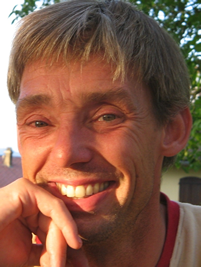
Bart van Tiggelen
Laboratoire de Physique et Modélisation des Milieux Condensés (LPMMC), CNRS
Université Joseph Fourier
Grenoble, France
lpm2c.grenoble.cnrs.fr/spip.php?article303&lang=fr
Bart van Tiggelen is a Research Professor with the Centre National de la Recherche Scientifique (CNRS) in Grenoble, France. He developed novel concepts (energy velocity, point scatterers, Photon Hall Effect, C0 speckle) in electromagnetic wave propagation in disordered media and later in liquid crystals. He has also made contributions to acoustic and seismic wave scattering. He participated in many theoretical and experimental projects of Anderson localization and mesoscopic physics with light, microwaves, sound and matter waves. His recent research interests focus on quantum-field theory of the quantum vacuum. He is currently Deputy Director at CNRS in charge of theoretical and computational physics.
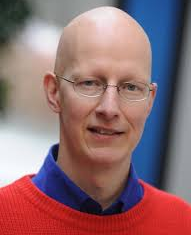
Willem L. Vos
Complex Photonic Systems (COPS)
University of Twente
Twente, The Netherlands
cops.nano-cops.com/
Professor Dr. Willem L. Vos is guiding an ambitious research program on "Complex Photonic Systems" at the University of Twente in the city of Enschede in collaboration with several groups in the MESA+ Institute for Nanotechnology. He is Fellow of the American Physical Society (APS), as well as Fellow of the Optical Society (OSA). Willem Vos was awarded the Snellius medal by the "Genootschap ter bevordering van Natuur-, Genees- en Heelkunde" (Society for the Advancement of Science, Medicine and Surgery) in Amsterdam, November 25, 2005. The medal is awarded only once every 10 years. Previous awardees include Profs. Zernike and van der Waals. Further he was honored by the Faculty of Science and Mathematics, University of Amsterdam to give the Distinguished Honorary Lecture in Amsterdam, March 1, 2001. Willem Vos was owner of the Carnegie Fellowship, 1991-1993.
The Complex Photonic Systems (COPS) group aims to control light and optical processes in nanophotonic structures, and strives for maximum scientific impact. The group was among the first five groups worldwide (at present hundreds if not thousands) that initiated optical experiments on photonic bandgap crystals, and they have pioneered inverse opals, the most powerful crystals for visible light. Willem Vos and colaborators have opened a new field of research by shaping wavefronts to focus light in or beyond opaque media. Further to mention are pioneering studies on Anderson localization and diffusion of light. Present research goals are: Focusing light deep inside opaque metamaterials. The development of innovative imaging methods based on the control of optical wavefronts. Demonstrating “sweet spots” in photonic metamaterials where quantum systems such as quantum dots experience greatly enhanced or strongly inhibited light-matter interaction. Functional 3D photonic bandgap crystals with high-Q cavities by CMOS-compatible methods. Ultrafast optical switching. Long range transport in disordered media and exploration of novel opportunities for applications and fundamental science using interference in complex media.
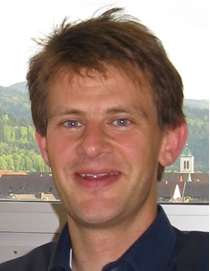
Thomas Wellens
Quantenoptik und -statistik
University of Freiburg
Freiburg, Germany
omnibus.uni-freiburg.de/~tw509/
Thomas Wellens studied physics from 1993 to 1998 at Regensburg University, LMU Munich, and the Max Planck Institute for Quantum Optics in Garching (Germany). For his PhD studies on “Control and Entanglement of Quantum States”, under supervision of Andreas Buchleitner, he went to the Max-Planck-Institute for the Physics of Complex Systems in Dresden. After obtaining the PhD in 2002, he spent 3 years in France, working on multiple scattering of light in cold atomic gases at the Institut Non-Linéaire de Nice and the Laboratoire Kastler Brossel (Paris). From 2005 to 2007, he was PostDoc at Erlangen-Nürnberg University, before he came to Freiburg University in October 2007, where he completed the Habilitation in May 2010. His main research interests are: quantum transport, multiple scattering theory, quantum optics and cold matter.